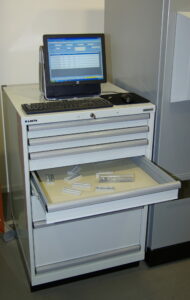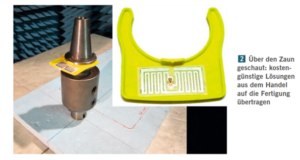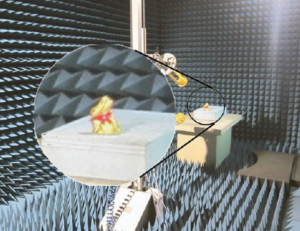RFID Technologies
The unique identification of cutting tools is a pre-requisite to monitor tool life and tool flow on the shop floor. Data matrix codes are widely used. RFID technologies may be used to improve Toolmanagement operations. For example to eliminate manual bookings. Tools may be tracked automatically if only the tags where not too expensive and could be scanned from the distance.
2011 witnessed the first tool cabinet that does not require the user to book anything. The „intelligent“ cabinet counts inventory after the withdrawal and books what’s missing on the users cost center. CIMSOURCE and it’s partners (Achterberg , Metro ECC) proved that simple UHF RFID tags would do the trick. Awesome!
And rebuild a tool cabinet as a Faraday’s cage that allows for a single antenna to read all tags.

Looking for an inexpensive solution we turned to retail. Because in retail RFID technologies were already more widespread than in the industry, and the cost pressure is enormous. The EEC Metro Innovation Center had the solution. Simple “Flap Tags” were used to label all kinds of products, with one exception:
»Certain products, as for example sardines in oil, are still a challenge”, says the expert of EEC. Obviously, the combination of metal and oil are not good for simple RFID tags for inexpensive RFID tags (yet).
So what if they tell you RFID and tools, that’s metal on metal, it will never work! Give it a try!
Tagging tools to monitor the supply chain is one thing. Tagging single components to track tool flow on the shop floor quite another. Data matrix codes are limited because you need a direct visual contact. And RFID? Stay tuned. And see the opportunities that provides for your business


